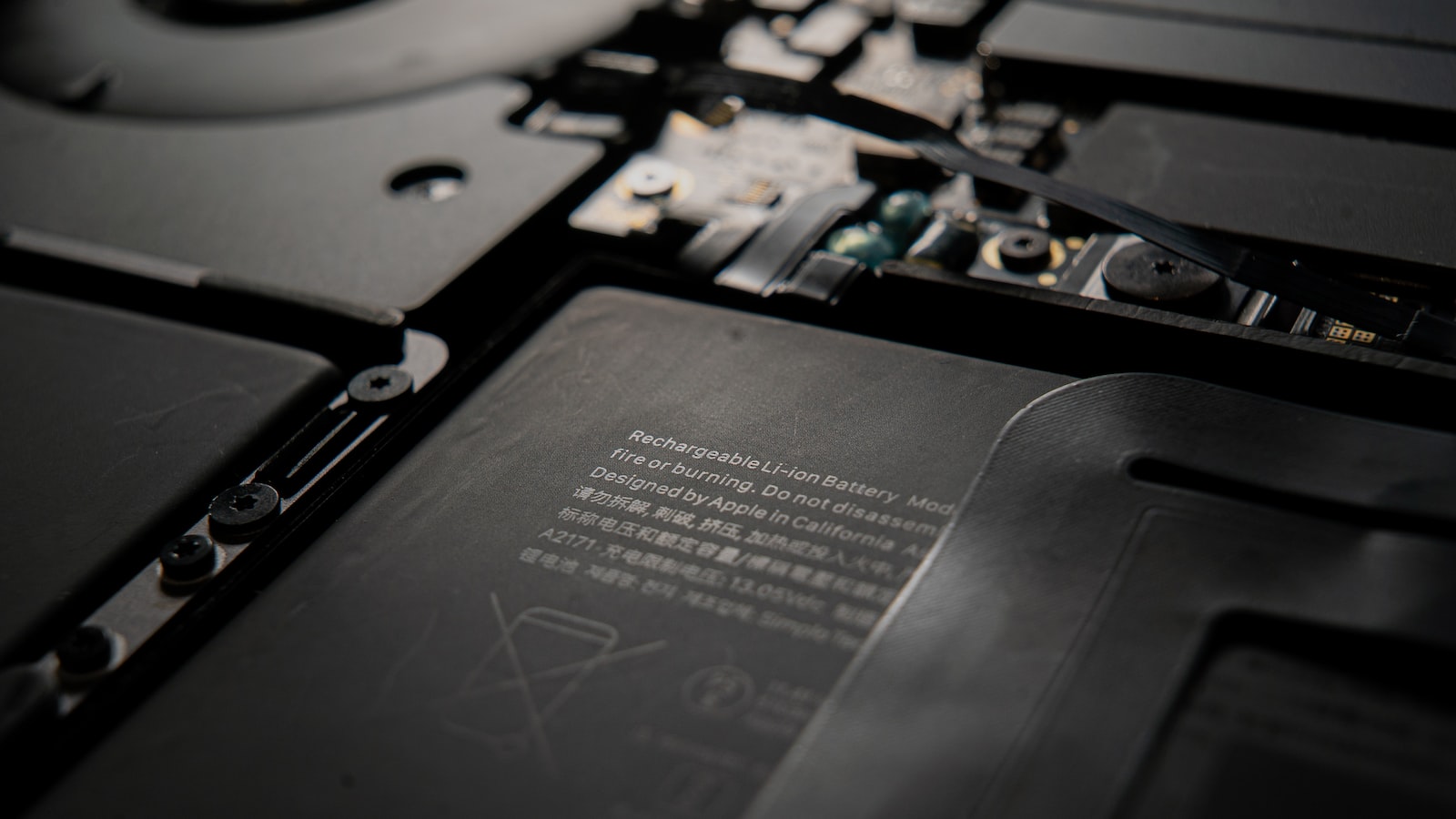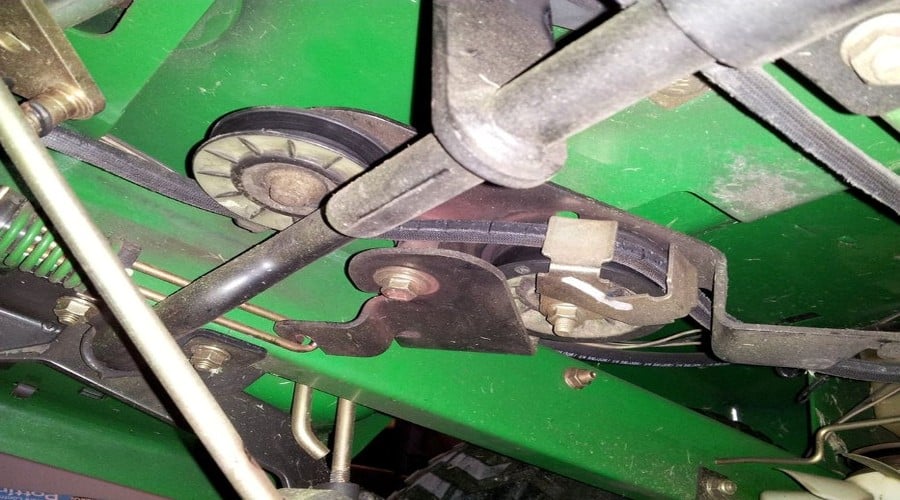Unveiling the Mysterious Enigma:
Unlock the Secrets of Determining if Your Mower Drive Belt is Forsaken
In the enchanting realm of lawn care, where symmetrical green blades caress the earth beneath our feet, there lies a hidden component that ensures the harmonious dance between man and machine. Nestled within the intricate machinery of our beloved mowers dwells a silent hero – the enigmatic drive belt. Like an elusive whisper in the wind, this unassuming belt tirelessly orchestrates the synchronized movement of blades, wheels, and pulleys, permitting our lawn warriors to tackle unruly growth with absolute precision.
Yet, amidst the evergreen serenade, any seasoned gardener knows that even the most magical of beings can fall prey to wear and tear, succumbing to the passing of time. In the realm of mower maintenance, recognizing the subtle signals of a failing drive belt proves crucial. Its frailty, often concealed beneath layers of belt guards and engine covers, can be the harbinger of a woeful fate for your cherished machine. Fear not, for within this captivating chronicle, we shall guide you through the ethereal world of drive belts, unravelling the mysteries within, and arming you with the knowledge to distinguish between a healthy harmonious hum and the clutches of a forsaken drive belt on the brink of collapse.
Welcome to a mystical journey, where ethereal belts entice you to peruse the realm of mower drive belts, decode their hidden messages, and separate the virtuous from the destitute. Beautifully blending magic and practicality, join us as we tread the fine line between enchantment and pragmatism, illuminating your path towards recognizing the telltale signs that your mower’s drive belt has fallen into despair. Cast aside all doubts and prepare to traverse the realms of mechanical mystique, for understanding the language of drive belts is the key to preserving a primeval bond between man and nature’s sprawling canvas – your meticulously manicured lawn.
Signs of a Faulty Mower Drive Belt
If you are wondering how to tell if your mower drive belt is bad, there are several signs to look out for. One of the first indications is a lack of power or efficiency in your lawn mower’s performance. If you notice that your mower is struggling to cut through the grass or is not able to maintain a consistent speed, it may be due to a faulty drive belt.
Another common sign of a bad mower drive belt is excessive vibration or noise coming from the mower deck. A worn or loosened belt can cause the blades to spin unevenly, resulting in a rough and uneven cut. Additionally, if you notice that the belt is cracked, frayed, or has visible signs of wear and tear, it is a clear indication that it needs to be replaced.
Features/Tips:
| What to Do | |
|---|---|
| The mower is struggling to cut through grass | Inspect the drive belt for any signs of wear and replace if necessary |
| Excessive vibration or noise from the mower deck | Tighten or replace the drive belt to ensure smooth blade operation |
| Visible cracks, fraying, or signs of wear on the belt | Replace the belt immediately to prevent further damage |

Symptoms of a Worn-Out Mower Drive Belt
Is your lawn looking a bit neglected? Has your trusty mower been acting up lately? It might just be time to check your drive belt! While it may seem like a small and insignificant part, the mower drive belt plays a crucial role in making your mower run smoothly. However, just like any other component, it can wear out over time. Here are a few telltale signs that your mower drive belt may be due for a replacement:
- Slipping or jerking motion: If your mower starts to slip or jerk while in operation, it could be a sign of a worn-out drive belt. This happens because the worn belt cannot grip the pulleys properly, resulting in a loss of power transfer.
- Burning smell: Do you notice a burning smell when you mow your lawn? The culprit might just be a worn-out drive belt. As the belt deteriorates, it generates friction, causing it to produce a distinct burning odor.
- Lack of power: Is your mower struggling to cut through thick grass or experiencing a loss of power? A worn-out drive belt may be the culprit. When the belt becomes worn and stretched, it cannot deliver the necessary power to the mower blades, leading to decreased performance.
If you observe any of these symptoms, it is essential to check your mower drive belt for wear and tear. Replacing a worn-out belt will not only ensure optimal performance but also prevent further damage to your mower. Here are a couple of useful features to look for when choosing a replacement belt:
| Features | Tips |
|---|---|
| Material: | Opt for a high-quality, durable belt made from heavy-duty materials like rubber, Kevlar, or polyester. These materials offer enhanced resistance to heat, UV rays, and general wear. |
| Dimensions: | Ensure you select a belt with the correct length, width, and thickness, as specified by the manufacturer. Using incorrect dimensions can lead to inadequate power transfer or potential damage to other components. |
| Compatibility: | Verify that the replacement belt is compatible with your specific mower make and model. Consult your mower’s manual or seek expert advice if unsure. |
Remember, a well-maintained drive belt is essential for the smooth operation and longevity of your mower. So, don’t ignore those symptoms and take the necessary steps to keep your mower running at its best!

Diagnosing the Problem: Tips to Determine if the Mower Drive Belt is Bad
In your quest for a well-manicured lawn, a smoothly functioning mower drive belt is essential. But how do you know if yours is in tip-top shape or if it’s time for a replacement? Worry not, for we have compiled a list of telltale signs that will help you determine if your mower drive belt is on its last legs.
Firstly, take a visual inspection of the drive belt. Is it frayed, cracked, or showing signs of wear and tear? If so, chances are it’s time to bid your old faithful adieu. Additionally, listen for any unusual noises when the mower is running. A squealing or screeching sound could be a sign of a worn-out belt. To be absolutely certain, try engaging the blades and observe if they spin properly. If they don’t, it might indicate a failing drive belt.
| Tips | Features |
|---|---|
| 1. Check for visible signs of wear such as cracks, fraying, or missing fragments. | 1. Smooth operation of the mower blades. |
| 2. Listen for abnormal screeching, rattling, or squealing noises when the mower is engaged. | 2. Consistent speed while mowing different terrains. |
| 3. Observe if the mower stalls or loses power when the blades are activated. | 3. Minimal vibrations or jerking motions during operation. |
By paying close attention to these key indicators, you can diagnose whether your mower drive belt is indeed bad. Remember, a well-maintained drive belt will keep your mower in prime shape and ensure a flawless mowing experience for seasons to come.

Recommendations for Replacing a Damaged Mower Drive Belt
| Features | Tips |
|---|---|
| 1. Excessive noise during mowing | 1. Regularly inspect the mower’s drive belt for any signs of wear and tear. |
| 2. Unusual vibrations or jerking movements | 2. Lubricate the mower’s pulleys and belts to reduce friction and prolong their lifespan. |
| 3. Difficulty in engaging the blades or the mower not moving | 3. Follow the manufacturer’s guidelines on replacing the drive belt and make sure to use the correct size and type. |
Has your lawnmower been acting up lately? It might be time to check your mower drive belt for any signs of damage. A faulty drive belt can lead to a variety of problems, such as excessive noise, vibrations, or even the inability to engage the blades or move the mower at all. But how can you tell if it’s really the drive belt that’s causing these issues?
One tell-tale sign of a bad mower drive belt is excessive noise during operation. If you notice your mower making more noise than usual, it could be an indication that the belt is worn out or misaligned. Another clue could be unusual vibrations or jerking movements while mowing. This typically happens when the belt starts to slip or lose tension. Lastly, if you’re struggling to engage the blades or your mower simply won’t move, a damaged drive belt might be the culprit. Regular inspections and proper maintenance are key to preventing these issues. Make sure to check the drive belt regularly for signs of wear and tear, and consider lubricating the pulleys and belts to reduce friction and extend their lifespan. When replacing the drive belt, always refer to the manufacturer’s guidelines to ensure you’re using the correct size and type for your specific mower model.
Frequently Asked Questions
Q: Is your lawn mower belt secretly plotting against you?
A: Well, the belt might not have an evil master plan, but it can certainly cause some trouble if it’s gone bad.
Q: How can I decipher the secret code of a bad drive belt in my mower?
A: Don’t worry, there are a few telltale signs! Keep an eye out for excessive vibrations, a sudden decrease in power, or even a distinct burning smell.
Q: Can I become a forensic detective and unravel the mystery of my mower’s belt myself?
A: Absolutely! You might not need a magnifying glass and a hat, but with a little investigation, you can examine the belt for any signs of wear or damage. However, remember to prioritize safety and consult a professional if needed. And there you have it, a comprehensive guide on how to uncover the secrets of your trusty mower’s drive belt. We have taken you on a thrilling journey through the various clues and symptoms that indicate whether your drive belt is a hero, or if it’s time to bid it a fond farewell. By keeping a watchful eye on telltale signs like excessive slipping, strange noises, and mysterious detours, you can stay one step ahead of any potential belt woes.
Remember, in the realm of mower maintenance, prevention truly is the key. Regular inspections, a little bit of tender love and care, and timely belt replacements can save you from unnecessary breakdowns and exasperating patchy lawns. So, before you embark on your next mowing adventure, make sure to give your trusty companion a quick once-over, checking its drive belt for any signs of wear or despair.
Whether you are a seasoned lawn enthusiast or a novice in the realm of mowing, you now possess the knowledge to identify the telltale signs of a tired and worn-out drive belt. Armed with this newfound wisdom, you can rest assured that your mower will continue to perform its duty with the resilience and precision it was designed for.
So, dear reader, go forth fearlessly, and may your mowing adventures be forever free from the grip of a bad drive belt. Don’t let this vital component go unnoticed, for a well-cared-for drive belt ensures a harmonious dance between engine and blades. Happy mowing!
- When to Put Weed and Feed on Lawn in Michigan - October 16, 2023
- When to Fertilize Potatoes Plants - October 16, 2023
- Can You Plant Clover in the Spring - October 16, 2023

